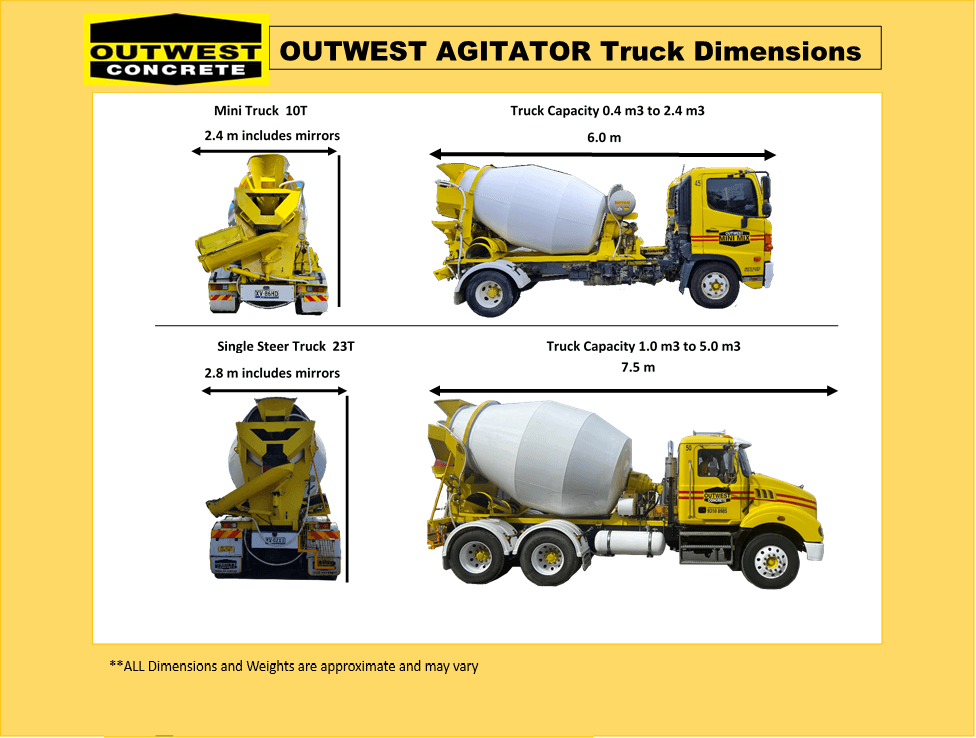Truck Dimensions
For your project, you might need more than one truck or a concrete pump to get your concrete to the right location. We offer three different sized concrete mixers:
| Truck | Load Capacity | Concrete Chute Size |
|---|---|---|
| Mini Mix | 0.4 Mt Min, 2.4 Mt Max | 3.0 Meters |
| Maxi Truck | 1.0 Mt Min, 6.0 Mt Max | 3.9 Meters |
Choosing the Right Concrete
Concrete is made from aggregates (stone and sand), cement, and water. The mix varies based on its use, such as footings, slabs, driveways, or pre-cast panels.
Matching New and Old Concrete
New and old concrete will never match 100% due to natural variations in the materials. While they will be close, slight differences are expected because concrete is made from natural materials.
Calculating Concrete Needs
Concrete is bought by the cubic metre (m³) and used by the square metre (m²). For typical household projects, 10cm (100mm) thickness is standard. So, 1m³ of concrete covers 10m². Measure your area in m² and divide by 10 to find out how much concrete you need.
Finding Quality Tradesmen
Look for professional, itemised quotes, good recommendations, proper licensing, and insurance. Ask for references and check them.
Tips for Hiring a Concreter
Payment Terms: Pay a deposit at the start and the balance upon completion. Avoid paying in full upfront.
Written Quotes: Ensure all work details are included in the quote.
Insurance and Licensing: Verify their insurance and licenses.
Reputation: Check references and their relationship with the local council.
Multiple Quotes: Get several quotes to compare. The cheapest isn't always the best.
Steps in Concreting
Preparation: Plan your project and excavate the area.
Placement: Concrete is delivered and placed via pump or other methods.
Finishing: Screed and finish the concrete as it hardens.
Sealing: Once cured, seal the concrete for protection.
DIY Concreting
Concreting is complex and labour-intensive. Hiring a qualified concreter ensures proper techniques and a quality finish.
Risks of Adding Too Much Water
Adding too much water can cause:
Lower strength
Material segregation
Increased cracking
Dusty surface
Costly repairs
For more information, visit the Cement Concrete Aggregates Australia website.


